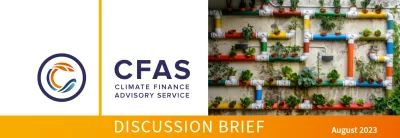MDBs’ partnerships with international climate funds

The international climate finance architecture is a complex landscape in which multilateral development banks (MDBs) play a prominent role. In addition to bilateral climate finance flows, donor countries provide international climate finance directly to MDBs, as well as to multilateral climate funds such as the Green Climate Fund (GCF), Global Environmental Facility (GEF), Adaptation Fund (AF) and Climate Investment Funds (CIF), which MDBs also tap into for project finance. This raises questions about the efficiency and effectiveness of the international climate finance landscape, as well as concerns with regard to complementarity and coherence.
Recently, the call for a process of reform of the international financial architecture (IFA) has gained significant momentum among the international community. This IFA reform process is not limited to climate-change-related finance; however, climate-change-related issues and how to make MDBs in this context fit for purpose, are an important focus area. Several questions need to be answered in this context, one of them concerning the MDBs role within the international climate finance landscape.
This discussion brief looks in more detail at the MDBs’ role in the broader climate finance architecture, in the context of potential reform. We look at why MDBs seek to access finance from the above-mentioned climate funds, to implement climate change projects, instead of directly using their own funding. The present discussion brief also looks into the rationale and logic of MDBs in tapping into the above-mentioned climate funds and related benefits and positive impacts, as well as how this relates to the MDBs’ climate goals.
On the other hand, this paper also poses the question of whether MDBs tapping into climate funds is the most effective use of those funds and whether this has implications for other actors, especially national institutions in developing countries aiming to directly access resources from climate funds. Finally, we also look into how current incentives for MDBs to tap into climate funds are explained by structural problems and policies or other obstacles and barriers within the MDBs.
| Author(s) | Julia Grimm, Bertha Argueta, David Ryfisch, Dr. Anja Caroline Gebel |
|---|---|
| Document type | Discussion Paper
|

